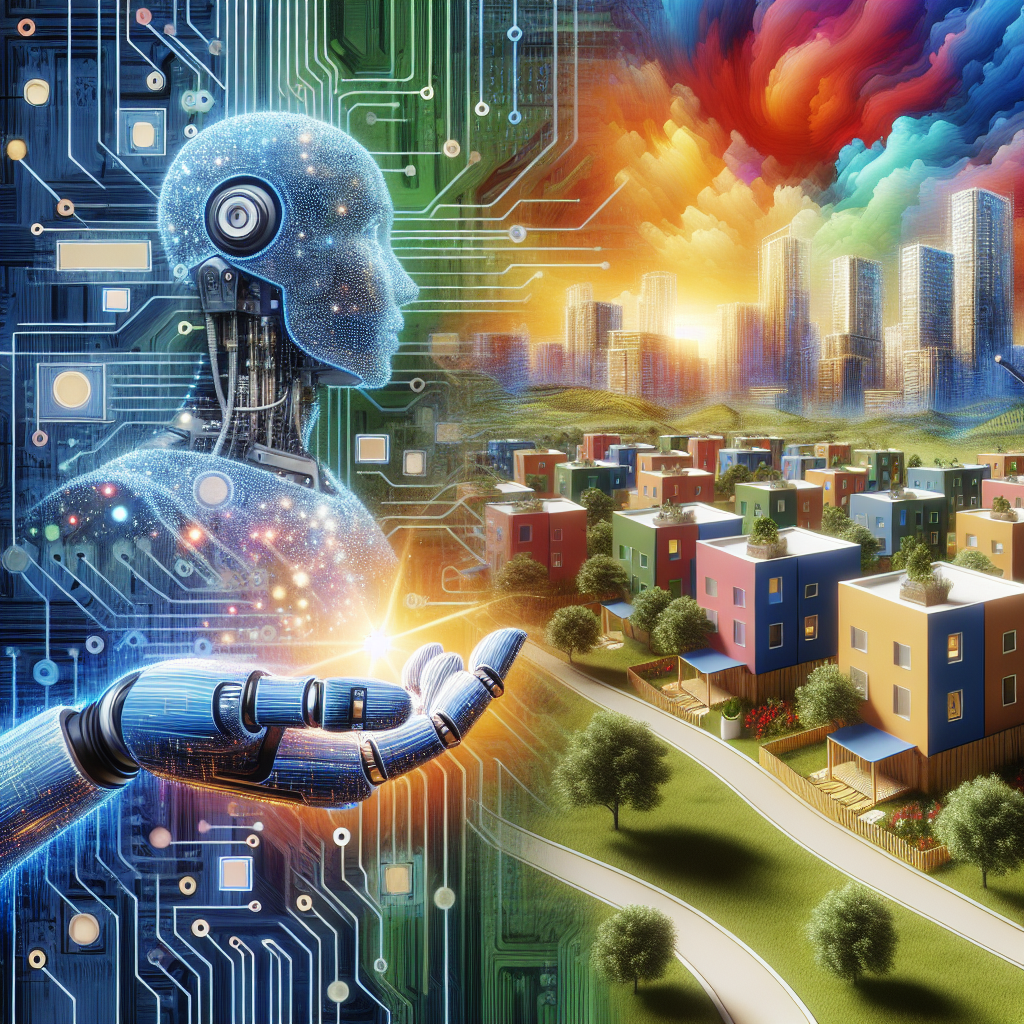The Potential of AI in Affordable Housing Solutions
The issue of affordable housing has become a growing concern in many cities around the world. With rising populations and limited resources, finding suitable housing for everyone has become a challenge. However, with the advancement of technology, particularly artificial intelligence (AI), there is now a potential for innovative solutions to address this issue.
AI has the potential to revolutionize the affordable housing sector by streamlining processes, reducing costs, and increasing efficiency. From predictive analytics to virtual reality, AI can be leveraged in various ways to make housing more accessible and affordable for all.
Predictive Analytics
One of the key ways AI can be utilized in affordable housing solutions is through predictive analytics. By analyzing data on housing trends, demographics, and economic factors, AI can help predict future housing needs and trends. This can enable policymakers and developers to make informed decisions on where and how to invest in affordable housing projects.
For example, AI can analyze data on population growth, income levels, and housing prices to identify areas where affordable housing is most needed. This information can then be used to guide the development of new affordable housing projects in those areas, ensuring that resources are allocated efficiently.
Virtual Reality
Another way AI can be used in affordable housing solutions is through virtual reality (VR) technology. VR can provide a realistic and immersive experience of a property, allowing potential buyers or renters to tour a property without physically being there. This can help reduce the time and cost associated with visiting multiple properties in person, making the housing search process more efficient.
Additionally, VR can also be used to design and visualize affordable housing projects before they are built. This can help developers and policymakers make informed decisions on the design and layout of affordable housing units, ensuring that they meet the needs of residents while also being cost-effective to build.
Automated Maintenance
AI can also be used to improve the maintenance of affordable housing units. By using sensors and IoT devices, AI can monitor the condition of a property in real-time and alert maintenance teams to any issues that need attention. This can help prevent costly repairs and ensure that affordable housing units are kept in good condition for residents.
Additionally, AI can also be used to automate routine maintenance tasks, such as cleaning, painting, and landscaping. This can help reduce the time and cost associated with maintaining affordable housing units, allowing resources to be allocated more efficiently.
Frequently Asked Questions
Q: How can AI help make housing more affordable?
A: AI can help make housing more affordable by streamlining processes, reducing costs, and increasing efficiency. By using predictive analytics, virtual reality, and automated maintenance, AI can help developers and policymakers make informed decisions on where and how to invest in affordable housing projects, design and visualize affordable housing units, and maintain affordable housing units in good condition.
Q: Will AI replace human workers in the affordable housing sector?
A: While AI has the potential to automate certain tasks in the affordable housing sector, such as maintenance and data analysis, it is unlikely to replace human workers entirely. AI is best used as a tool to augment human capabilities and improve efficiency, rather than to replace human workers altogether.
Q: How can AI help address the issue of housing discrimination?
A: AI can help address the issue of housing discrimination by analyzing data on housing trends, demographics, and economic factors to identify areas where affordable housing is most needed. By using data-driven insights, policymakers and developers can ensure that resources are allocated equitably and that affordable housing projects are accessible to all residents, regardless of their background.
In conclusion, AI has the potential to revolutionize the affordable housing sector by streamlining processes, reducing costs, and increasing efficiency. From predictive analytics to virtual reality, AI can be leveraged in various ways to make housing more accessible and affordable for all. By harnessing the power of AI, we can create innovative solutions to address the issue of affordable housing and ensure that everyone has access to safe and affordable housing.

